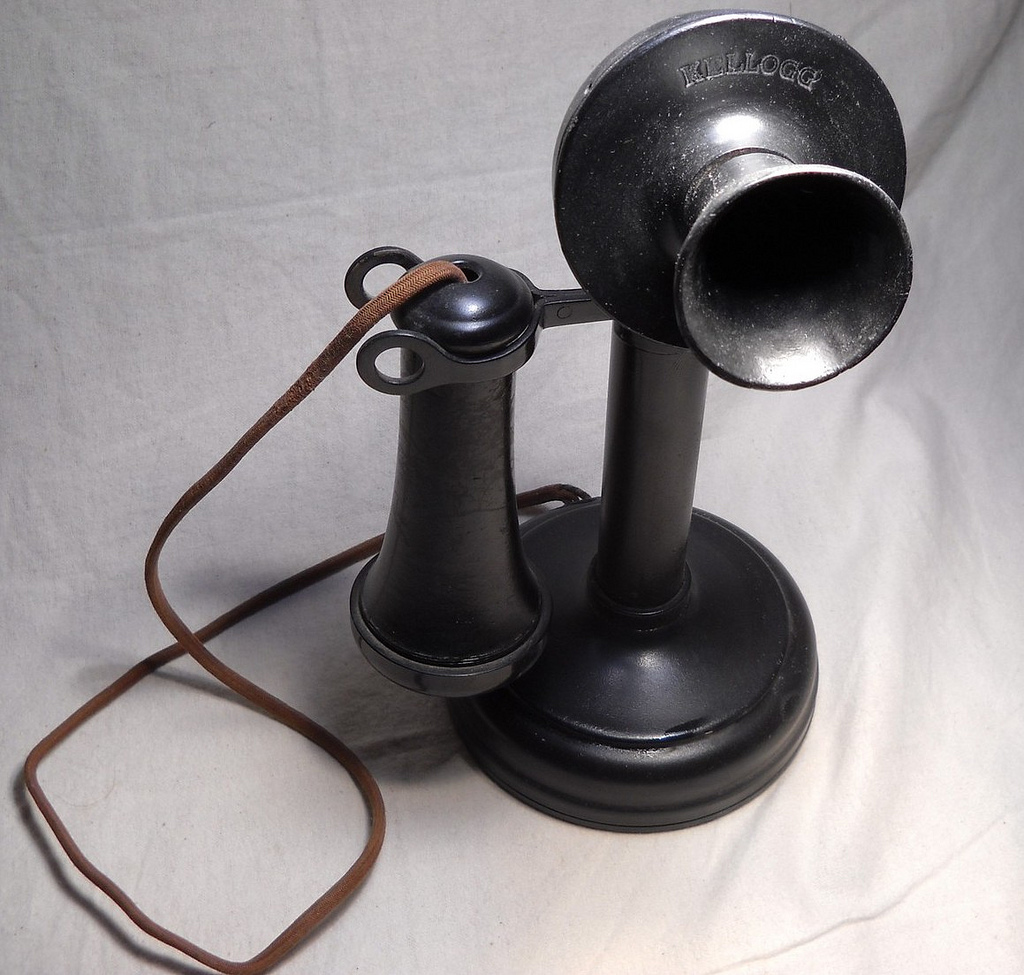One of the iconic consumer items of the 20th century, the candlestick telephone (also known as the “stick phone,” the “desktop,” or the “upright”) remains a familiar sight even in the era of smartphones and tablet PCs. In addition to their status as a cultural artifact and symbol of the early years of telephony, candlestick telephones remain valuable on the antiques market, where interesting or significant models can be of great value to collectors.

Features of Candlestick Telephones
The basic candlestick telephone consisted of a base, a stand or neck topped with a mouthpiece or microphone to speak into, and an earpiece attached to the base with a wire. Typically the earpiece hung on a switchhook, which would pop up and open the line when the user lifted the earpiece. The earliest models lacked a dial and were attached to a so-called “ringer box” that contained the hardware connecting the line to the local telephone network. After the introduction of automatic central exchanges, which permitted dialing out without the assistance of an operator, candlestick phones began to feature rotary dials, usually mounted at the phone’s base.
Nickel-plated brass was a typical material for the earliest candlestick telephones; later versions were made of other metals, rubber, or Bakelite, an early plastic. Mouthpieces made of glass or porcelain were available during certain periods due to the perception that these materials were more sanitary than the alternatives. The mouthpiece of most phones featured a carbon microphone, the standard technology of the time for transmitting sound into electrical signals.
Candlestick History
The first upright candlestick telephone was introduced in 1892 by Bell, some 20 years after his invention of the telephone. Bell’s patents expired shortly thereafter, and a massive proliferation of telephone lines and telephone manufacturing followed in due course. Famous early models include the Couch and Seeley “Potbelly” phone of 1900 and Stromberg-Carlson’s “oilcan” model from the same year, so called because of the resemblance of its base to a metal oilcan. The year 1905 saw the introduction by Almon B. Strowger’s Automatic Electric Company of a candlestick phone with an 11-digit dial. Around this time a number of other models appeared with multi-line capabilities, intercom features, and other now-familiar telephone applications.
The candlestick telephone remained the dominant phone design well into the 1930s, although by 1926 Bell had already introduced a desktop version that resembled modern handset phones. With the perfection of desktop phones that combined mouthpiece and receiver into one hand-held unit in the 1930s, the era of the candlestick phone came to a close. Nevertheless, many candlestick phones remained in use throughout the 1940s and 1950s, and several companies continued to make mock versions as novelties or collectibles in the following decades. The candlestick design itself also exerted a major influence on the look of later telephones, such as the famous upright Ericofon of the 1950s.
Candlestick Telephones as Antiques
Classic candlestick models are strong sellers in the antiques market and remain popular with collectors. Besides the interesting look of these phones, they are also an important part of the history of telephony and the telecommunications industry. Collectors are especially interested in phones from the first decades after the expiration of Bell’s patents, since the fierce competition during that period produced a number of unique models and small manufacturers that would not survive into the subsequent decades. Rare models from this early period often sell for thousands of dollars at auction.
Byline
This post was contributed by Sam Metcalf, a freelance writer who focuses on gadgets, technology, computers, hardware and other associated topics; those with iPads should check out the kensington ipad keyboard case to accessorize their device.
Image credit goes to Hometown Memories.

